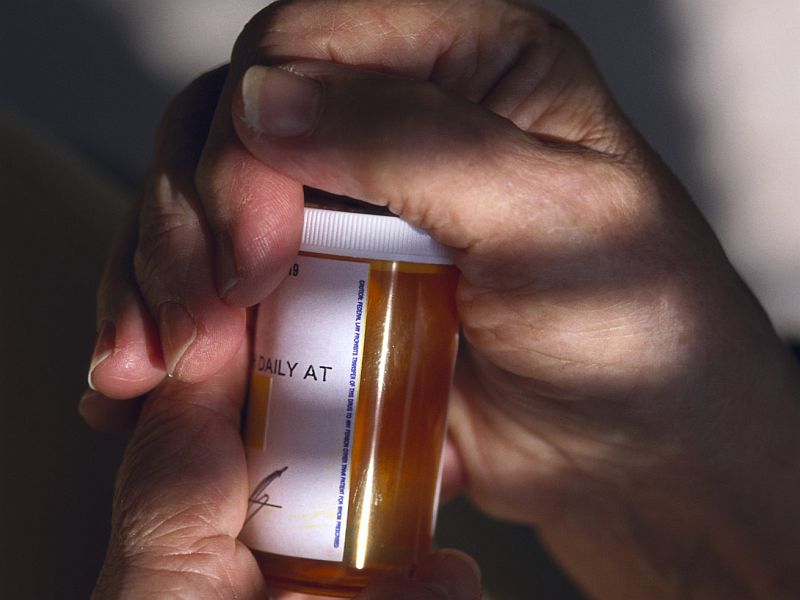
New research suggests that people with Parkinson’s disease may achieve better and more reliable motor control by taking an experimental drug called opicapone alongside the standard medication levodopa.
A study of several hundred Parkinson’s patients found that the drug — opicapone — boosts levodopa’s ability to control the motor difficulties associated with Parkinson’s, said study co-author Dr. Patricio Soares-da-Silva.
These motor problems include tremors, stiffness, and slowed movement.
Opicapone (Ongentys) appears to be an improvement over current treatment options, said Soares-da-Silva. He is director of research and development for the drug’s maker, Bial-Portela & Ca. SA, in Portugal.
There’s no known cure for Parkinson’s, a progressive neuro-degenerative disease. Nor is there any treatment that effectively slows or stops disease progression, according to the Michael J. Fox Foundation. The foundation was established to find a cure for Parkinson’s.
However, certain medications — like levodopa — can help control the movement problems.
The tremors and other motor difficulties arise because of insufficient dopamine — a chemical messenger, or neurotransmitter. Levodopa (Sinemet) is a central nervous system medication. In the body, the brain converts it into dopamine.
Levodopa, a pill, remains the most important first-line drug for the management of Parkinson’s, according to the National Parkinson Foundation.
But levodopa is tough to take. Because it can cause severe nausea, it must be taken with the drug carbidopa. Carbidopa (Lodosyn) prevents nausea and enhances levodopa’s potency.
Also, as Parkinson’s progresses, long-term levodopa patients often experience a wearing-off effect known as dyskinesia, which is characterized by frequent involuntary movement.
Two drugs known as COMT inhibitors are used to combat this effect, but both have serious downsides. One raises the risk for liver failure, while the other only boosts levodopa effectiveness moderately, still leaving patients with a frustrating roller coaster of treatment reliability, the researchers said.
The new study set out to explore a possible new option, opicapone. It, too, inhibits the COMT enzyme.
To test it, the researchers recruited 427 Parkinson’s patients (average age 63) from 71 health care facilities across 12 countries.
All had had a Parkinson’s diagnosis for at least three years, and were already experiencing waning levodopa effectiveness.
Between 2011 and 2013, all the patients began a three- to four-month initial trial. The patients either received 25- or 50-milligrams of opicapone once a day, or a daily placebo (dummy) pill. This was followed by a year-long regimen in which everyone got either low- or high-dose opicapone, alongside levodopa.
Ultimately, 286 patients completed the study. Most who dropped out cited adverse events. The most common side effects were movement problems (dyskinesia), constipation, and dry mouth, according to the study published online Dec. 27 in JAMA Neurology.
The research team found that at the end of both study phases, people taking the higher-dose version of opicapone achieved a “significant reduction” in the amount of time levodopa failed to work, which was characterized as “off-time.” This effect was not seen at the lower dose.
Soares-da-Silva added that higher-dose opicapone also triggered an increase in the amount of time levodopa performed well, meaning the amount of time the drug was “on” without signs of debilitating involuntary movement.
The drug is approved by the European Commission. The drug maker has not yet applied for approval in the United States.
The authors of an accompanying journal editorial suggest that opicapone appears to be a clear improvement on previous treatment options.
“This study … found opicapone to be safe, well tolerated, and easy to dose,” wrote Dr. Allison Boyle of the University of Texas Medical School in Houston, and colleagues.
The editorialists concluded that “once-a-day opicapone therapy could result in an easier and practical treatment approach for patients and clinicians.”
More information
There’s more about Parkinson’s disease at the National Parkinson Foundation.
Source: HealthDay

Leave a Reply